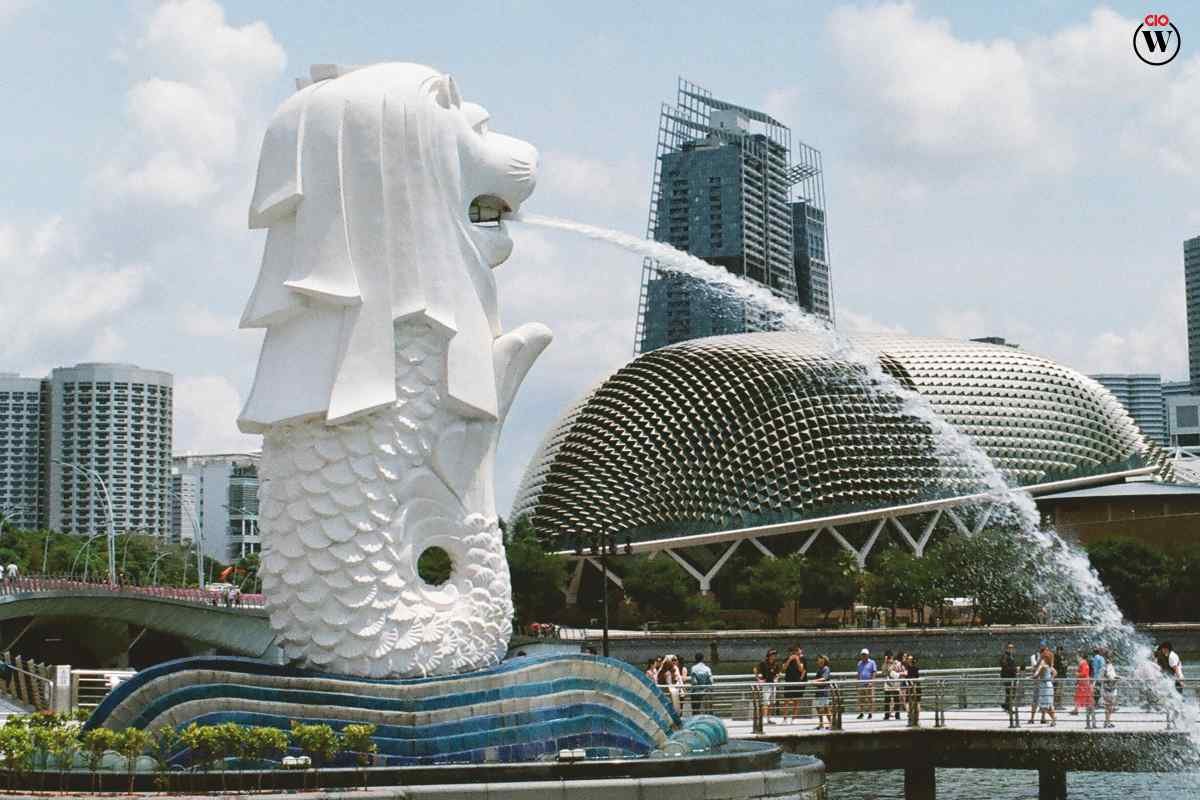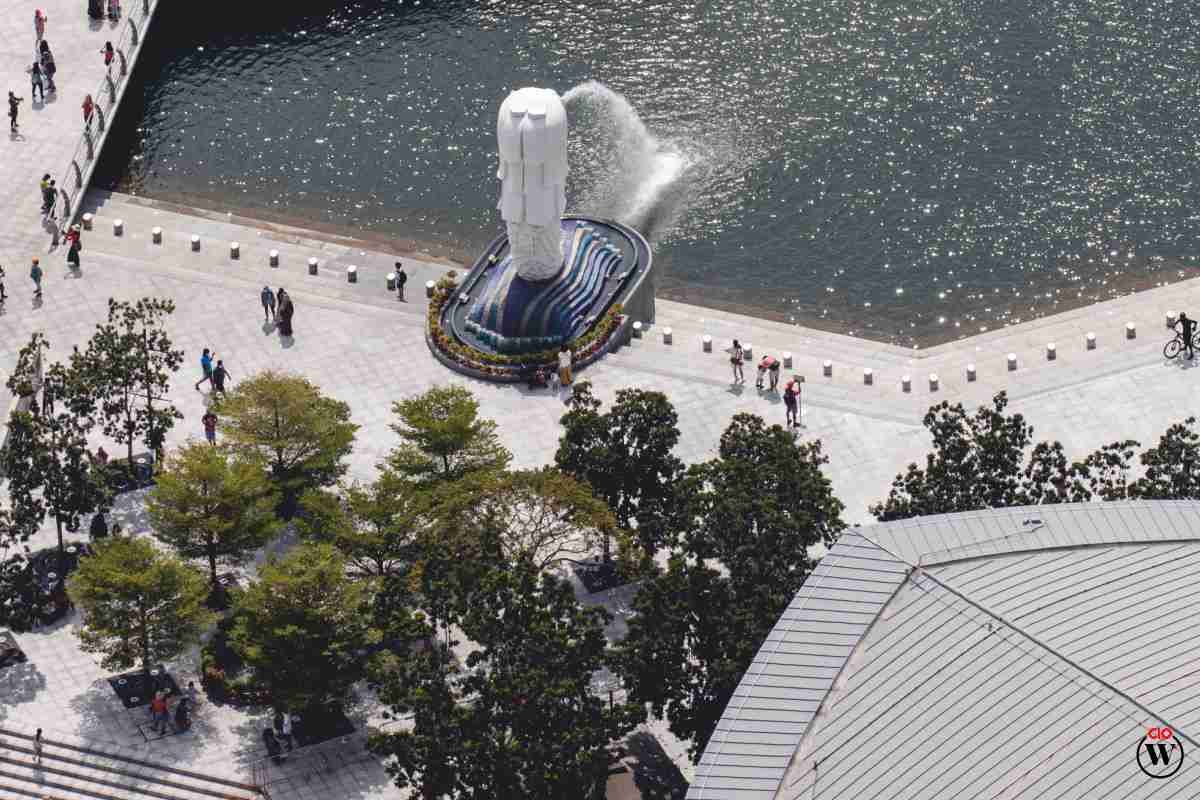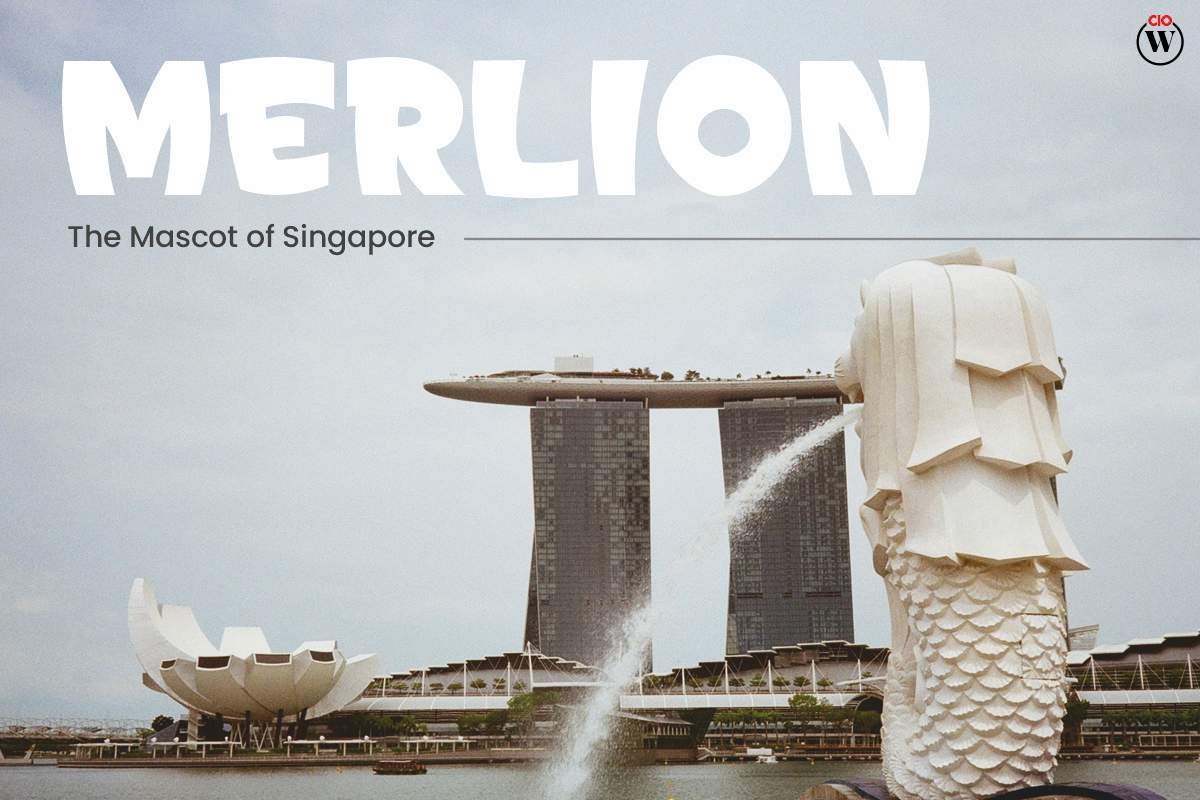The Merlion mascot of Singapore is an exceptional structure with half body of a Lion and half of the fish making it unique and its huge size makes it mesmerizing. The mythological monster known as the Merlion was created by a designer in the 1960s. So let’s start with the Lion section. A Malay prince is said to have been shipwrecked on Temasek Island, which is now Singapore, according to an old tradition.
In 1964, Fraser Burner, a designer, created a construction that combined the shape of a lion’s head with that of a fish, creating a unique and captivating structure. After that, the city’s iconic building was built, making its mascot, famous all over the world. The metropolis consists of a total of 6 merlions with different locations around the metropolis. The original structure, which stands 8.6 meters tall, spits water from its mouth. Since then, a 2-meter-tall Merlion cub has joined it and is currently present adjacent to the original monument.
About the Merlion –
A designer in the 1960s conjured up the mythical creature known as the Merlion.
Therefore, let’s begin with the Lion portion. An old legend claims a Malay prince was shipwrecked on Temasek Island which is today’s Singapore. He and his crew thought they had seen a lion, so they appropriately named the island Singapura, which means Lion City in Sanskrit. There is still debate over whether or not the animal was a lion. Except for the zoo, there have never been any reports of lions on the island.
The Merlion consists of half body of a lion and the remaining half of a fish. The Mer in the merlion denotes a fishing village from the history of the metropolis. In the 1960s, the metropolis needed a logo icon for the tourism board of the metropolis. A designer named Fraser Burner came up with a merged structure of the head of the lion and the tale of fish making it a mesmerizing and exceptional structure like Merlion in 1964. Thereafter the metropolis got its iconic structure making the city renowned worldwide with its mascot.

The erection of the statue was officiated by Prime Minister Lee Kuan Yew on September 15, 1972. At the extremity of the Former Merlion Park, at the mouth of the Singapore River, the original statue once stood with the Anderson Bridge in the background. The statue and its cub were moved to the current Park, which faces Marina Bay, in 2002. There, they now stand on a recently reclaimed point in front of The Fullerton Hotel.
Original and relocation of the Statue –
The erection of the Merlion statue was officiated by Prime Minister Lee Kuan Yew on September 15, 1972. Vice-chancellor Kwan Sai Kheong of the University of Singapore conceptualized it, and Lim Nang Seng, a Singaporean sculptor, built it between November 1971 and August 1972. Its height is 8.6 meters, and its weight is 70 tonnes. The approximate project costs were $165,000.
The construction of the Esplanade Bridge got completed in 1997, and although the construction was ready it blocked the views from the Marina Bay waterfront. By that time, the Singapore River’s entry was no longer at its original location. Thus, the statue and its cub were moved 120 meters in 2002 to the current Merlion Park, which faces Marina Bay, where they now stand on a recently reclaimed point in front of The Fullerton Hotel.
The historic relocation took place between April 23 and April 25, 2002. One barge, two DEMAG AC1600S cranes with a combined lifting capacity of 5000 tonnes, 20 engineers, and personnel on site were all necessary for the carefully organized journey. The complete statue was loaded onto a barge, which was then driven to the new location for installation at the current Merlion Park, close to the mouth of the Singapore River. The statue, which was too tall to pass underneath the Esplanade Bridge, had to be carried off the barge, over the bridge, and back onto the barge during the voyage.
On September 15, 2002, precisely 30 years after it was formally introduced, then-Senior Minister Lee Kuan Yew traveled back to Singapore to formally welcome the Merlion once more, this time in its new location. Visitors can now pose for pictures with the Merlion from the front or the side, with the new city skyline serving as the backdrop, thanks to a viewing deck that spans the Singapore River.
The artwork was positioned to face East, which is considered to be the most auspicious orientation. After being moved, the monument started spewing water again after ceasing to do so in its previous site in 1998 due to a broken water pump. A new two-unit water pump system with units that alternately operate has been installed, ensuring that there is always a backup.
Significance of the monument –
The national animal of Singapore is the Merlion. It is shown as a legendary animal with a lion’s head and a fish’s body. It is frequently utilized to represent both the city-state and its people in sports teams, advertising, branding, tourism, and as a national personification since it has a strong symbolic meaning for Singapore and Singaporeans as a whole.
Structure of The Merlion –
The 8.6-meter-tall original structure shoots water out of its mouth. A Merlion cub, which is now there and is situated next to the original monument and is just 2 meters tall, has since joined it. A well-known tourist landmark of Singapore, located in Merlion Park not far from the city center.
Merlion in Art & Culture –
It is featured in many films mostly in Hollywood and Bollywood films including the other Singapore heritages. The films which included Merlion in it were as follows:
- In the 2018 film Crazy Rich Asians, which is based on Kevin Kwan’s book of the same name, they make an appearance.
- The 2019 anime film Detective Conan: The Fist of Blue Sapphire features the Merlion on many occasions.
- An animated character from Singapore with a design obviously inspired by the Merlion can be seen in the 2021 film My Hero Academia: World Heroes’ Mission. He can spit high-pressure water out of his mouth, just like the main statue, thanks to his quirk (superpower). His name, Big Red Dot, is a play on the moniker “Little Red Dot” given to Singapore.

The television sector and web series are also included in it. Various shots and aspects of the merlion were shown in the various series. The series was namely.
- The Merlion (Japanese: ) made an appearance in episodes 18 and 24 of the well-known anime Cowboy Bebop, providing Singaporean amnesiac bounty hunter Faye Valentine with a clue as to her true ancestry.
- In the 2005 anime Karas, Hajime Sat’s, (Sat Hajime) a reimagining of Shinjuku prominently featured.
- Episode 11 of the Japanese light novel Seitokai no Ichizon features.
- The first special episode of the manga Hidamari Sketch features.
- In Episode 10 of Hidamari Sketch X: “Hoshimittsu,” the female landlord is looking for an apartment key when the Merlion comes.
- When Kyoko Hoshino noticed Chizuru Ikeda drooling in YuruYuri’s eighth episode, she exclaimed, “The Merlion!”
The literature also describes Merlion in a very amazing way by playing with the words and describing the beauty of the exceptional structure.
- With the publication of his poem “Ulysses by the Merlion” in 1979, Edwin Thumboo solidified the place as an iconic representation of Singapore. Future generations of Singaporean poets have struggled with the symbol, frequently taking an ironical, critical, or even hostile stand – and pointing out its artificiality and the refusal of ordinary Singaporeans to accept a tourist attraction as their national icon. This is due to Thumboo’s status as Singapore’s unofficial poet laureate and the nationalistic mythmaking qualities of his poetry. The poem “attracted significant attention among succeeding poets, who have all felt compelled to write their own Merlion (or anti-Merlion) poems, illustrating their anxiety of influence, as well as the continuing local fascination with the dialectic between a public and a private role,” according to the New York Times.
- In Gwee Li Sui’s Myth of the Stone in 1993, the first full-length graphic book published in Singapore, merlions as a species were made-up characters. They were portrayed as serene, sage animals that stood up for right and eventually defeated the terrible Kraken. In the early 1990s, Gwee helped to further popularise the iconoclastic depiction of the spitting Merlion. It resurfaced subsequently in his poetry collection Who Wants to Buy a Book of Poems









